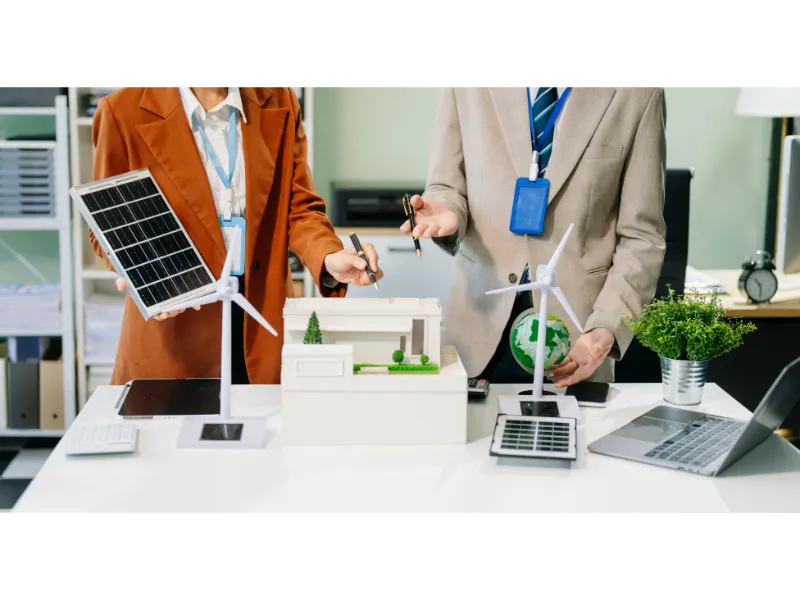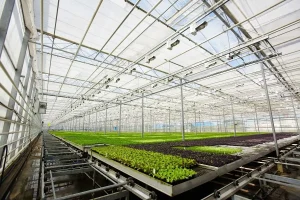The question of what is green transformation is directly related to the goal of a sustainable future. Therefore, production and consumption processes that do not harm the environment gain priority. It is also based on the efficient use of natural resources. In this way, development is ensured by preserving the ecological balance. Energy efficiency and transition to renewable resources are important.Fossil fuel impact is reduced. Waste management and recycling prevent resource waste. Low emission vehicles should be encouraged in transportation. Therefore, carbon emissions are minimized. Green buildings and eco-urbanism should be promoted to protect livable areas. Natural farming methods should also be encouraged to preserve soil and water quality.
Table of Contents
- Why Do We Need Green Transformation?
- How to Realize Green Transformation
- What are the Advantages of Green Transformation?
- Green Transformation Costs
- Green Transformation Areas
- Conclusion
- Frequently Asked Questions
Why Do We Need Green Transformation?
The question of why we need a green transformation is closely linked to today’s environmental crises. Therefore, structural steps must be taken to combat climate change. Furthermore, natural resources are being rapidly depleted. In this way, the life of future generations is threatened. Energy consumption and waste production are increasing uncontrollably. In this case, the environmental balance deteriorates and the quality of life declines. Furthermore, air, water and soil pollution adversely affect health. In this way, economic and social costs rise. Sustainable practices should be adopted in industry and agriculture. Therefore, production processes should not harm nature. Furthermore, reducing the carbon footprint is a global priority. In this way, greenhouse gas emissions are brought under control. Transportation, energy and construction sectors should be involved in this transformation. In this case, environmental policies will become widespread and the system will change.

How to Realize Green Transformation
The question of how to realize green transformation is directly linked to sustainable development goals. Therefore, environmentally sensitive policies should be prioritized. Furthermore, energy efficiency should be increased and waste should be prevented. This way, resources can be used more efficiently. The transition to renewable energy systems should be supported. In this case, it is possible to move away from fossil fuels. Also, low emission models in transportation should be encouraged. This will significantly reduce carbon emissions. Waste management and recycling systems should be expanded. Therefore, the understanding of circular economy should be strengthened. Also, production processes should be redesigned. In this way, technologies that do not harm the environment can be used. Sustainable methods should be applied in agriculture. In this case, soil and water resources are protected.

What are the Advantages of Green Transformation?
The question of what are the advantages of green transformation addresses environmental and economic benefits together. Therefore, it becomes easier to achieve sustainable development goals. In addition, costs are reduced thanks to energy efficiency. In this way, the competitiveness of businesses increases. The use of renewable energy protects the environment. In this case, carbon emissions are significantly reduced. Also, natural resources are used more efficiently. In this way, the pressure on the ecosystem is alleviated. Air, water and soil quality is maintained. Therefore, human health is positively affected. Furthermore, green technologies create new areas of employment. In this way, economic growth is supported. Waste management reduces environmental pollution. In this case, environmental risks are taken under control.

Green Transformation Costs
Although green transformation costs may seem high at the beginning, they provide advantages in the long term. Therefore, investments should be made with strategic planning. In addition, energy-efficient systems are costly in the first place. In this way, the potential for future savings is created. Renewable energy systems require installation. In this case, technology and infrastructure costs may increase. Also, transforming production processes incurs additional costs. In this way, existing machinery may have to be replaced. Training and consultancy services also require budget. Therefore, investments should be made in human resources. Also, some expenditures for legal compliance are unavoidable. This ensures compliance with environmental regulations. Certification processes are also a specific expense item. In this case, sustainability certificates are obtained.

Green Transformation Areas
Green transformation areas are practices that cover many sectors to reduce environmental impacts. Therefore, energy, transportation, agriculture and industry are the main transformation areas. In addition, the building sector is also being reshaped with sustainable solutions. In this way, energy efficient buildings are becoming widespread. Renewable energy is a priority transformation area. In this case, solar and wind energy systems should be supported. Also, low emission vehicles should be encouraged in transportation. In this way, carbon emissions are reduced. Organic and natural methods gain importance in agriculture. Therefore, soil and water resources are protected. Furthermore, industrial production should be made environmentally friendly. In this way, waste and energy management becomes effective. Waste management is an important part of transformation. In this case, recycling systems should be expanded.
Conclusion
As a result, reducing environmental impacts is now imperative for sustainable development. In this context, the question of what is Green Transformation includes not only environmental but also economic and social dimensions. Moreover, the transformation covers many sectors such as energy, transportation, industry and agriculture. Therefore, each area should create structural change plans within itself. The answers to the question “What is Green Transformation?” will form the basis of every step to be taken in the future. Therefore, all stakeholders should contribute decisively to the transformation process.
Frequently Asked Questions
Why do we need a green transformation? Because climate change, resource depletion and environmental pollution are increasing rapidly.
How is green transformation achieved? Energy efficiency, renewable energy, recycling and sustainable production.
How does green transformation affect individuals? Consumption habits change, quality of life and environmental awareness increase.
What are the advantages of green transformation? It protects nature, saves energy, provides new jobs and economic opportunities.
Is green transformation costly? Initially it requires investment, but in the long run it saves a lot of money.
Which areas does green transformation cover? Energy, transportation, agriculture, industry, construction, education and waste management.
How does the government support green transformation? Support is provided through incentives, grant programs, tax reductions and legal regulations.
Why is green transformation urgent? Because over time, irreversible environmental destruction can occur.
What are green technologies? Solar panels, electric vehicles, low energy consuming devices are examples.
What can we do in green transformation? We can contribute through energy saving, recycling, sustainable product choices.

 English
English
 Türkçe
Türkçe
 Ελληνικά
Ελληνικά
 Deutsch
Deutsch
 ქართული
ქართული
 العربية
العربية








